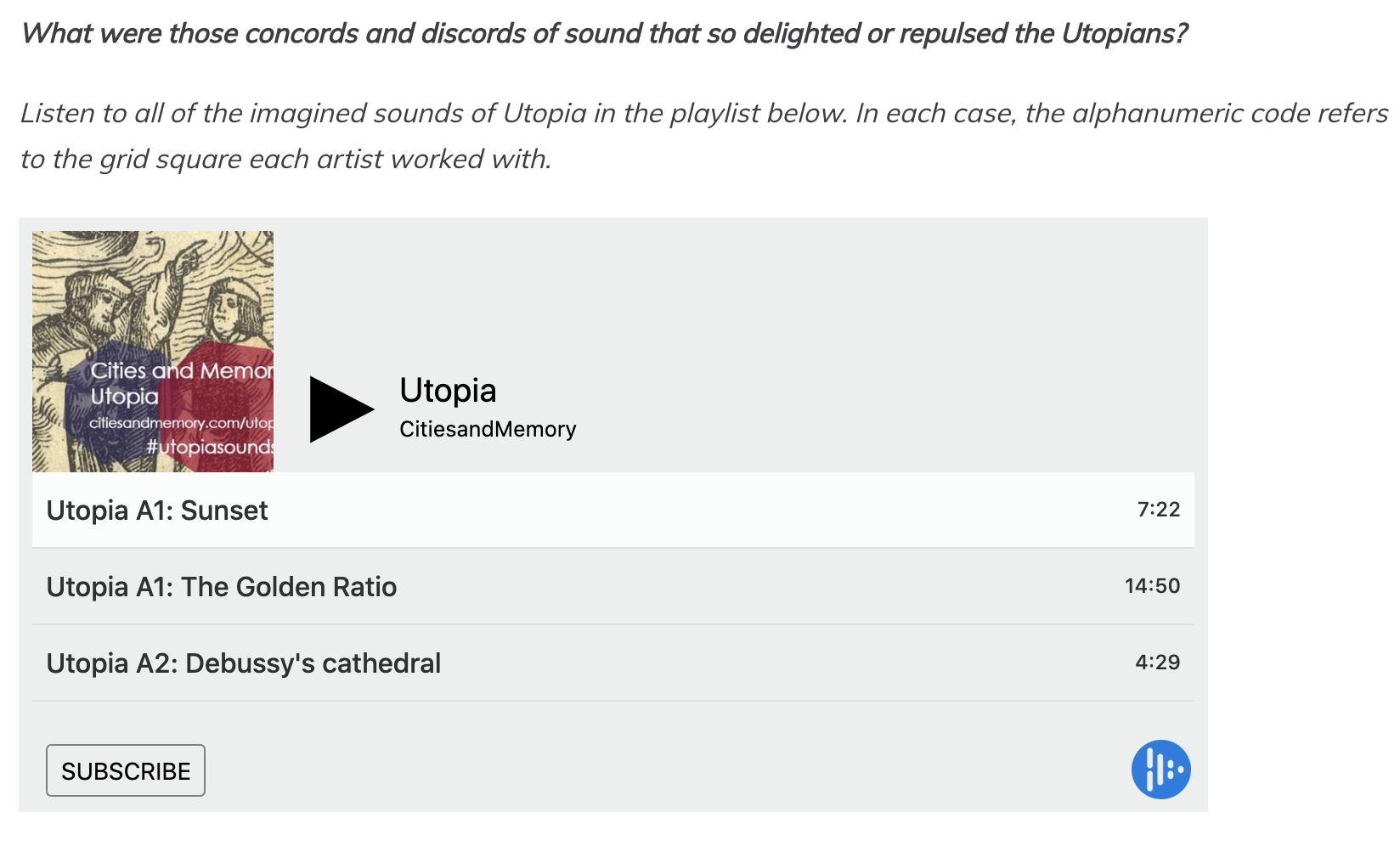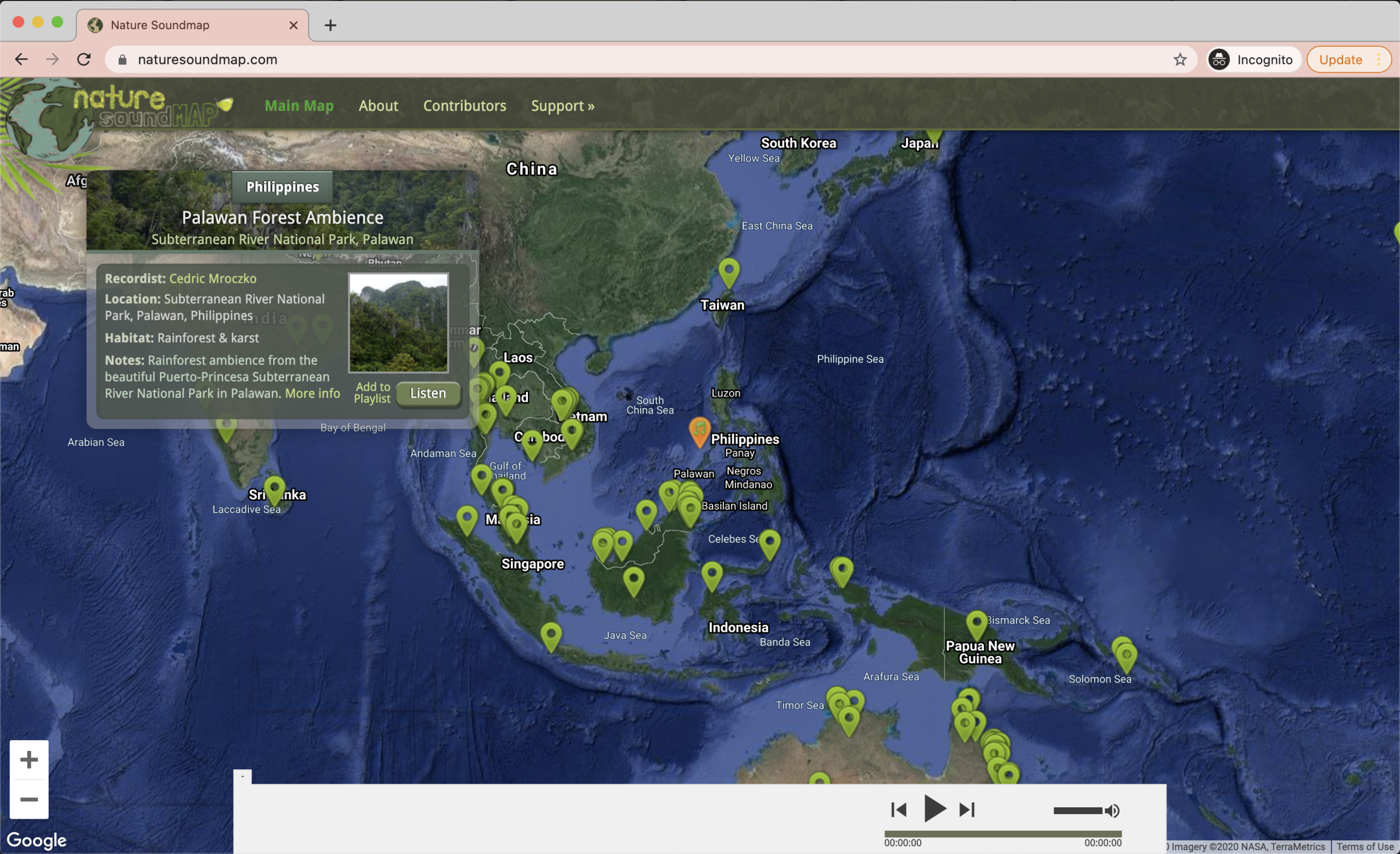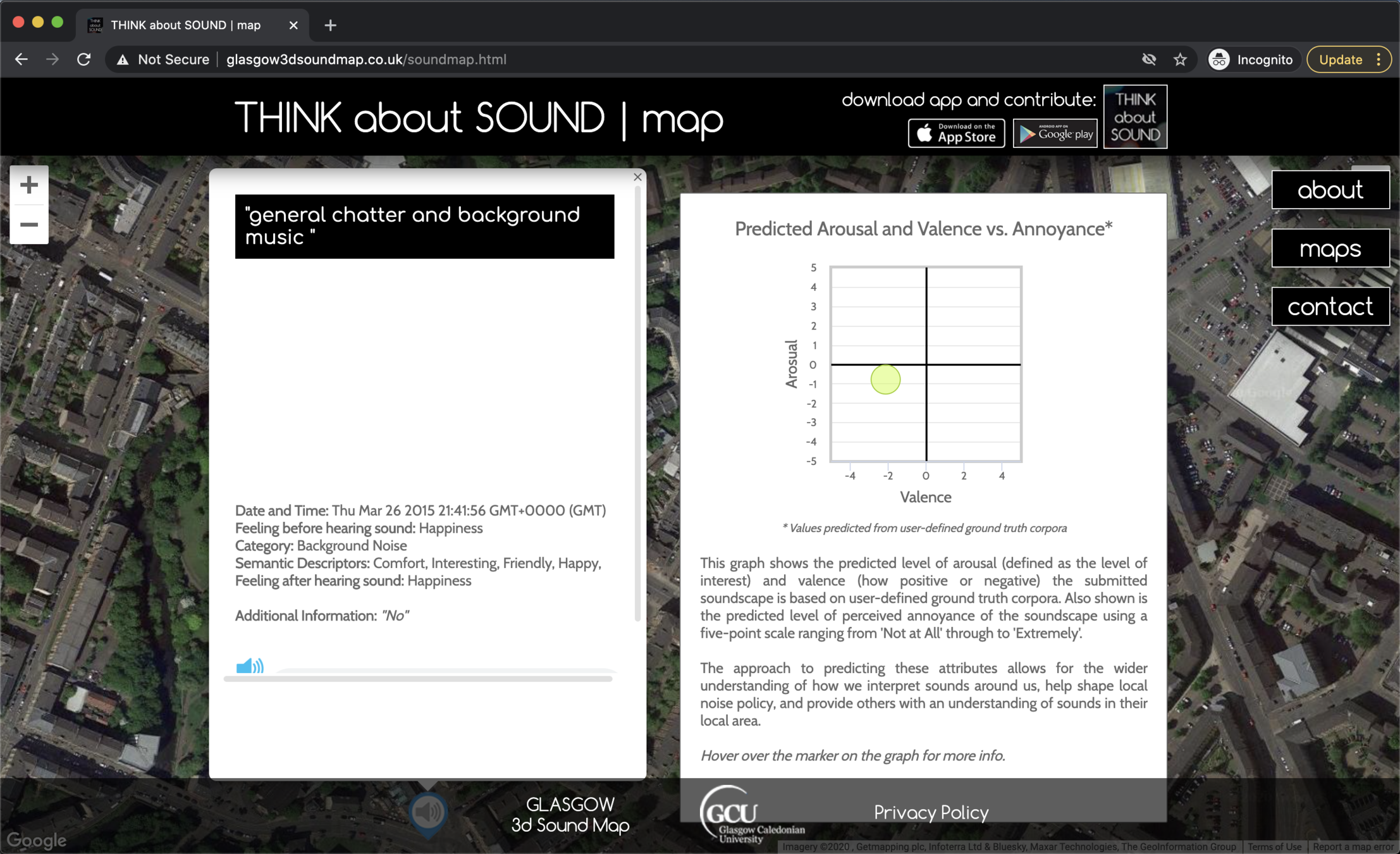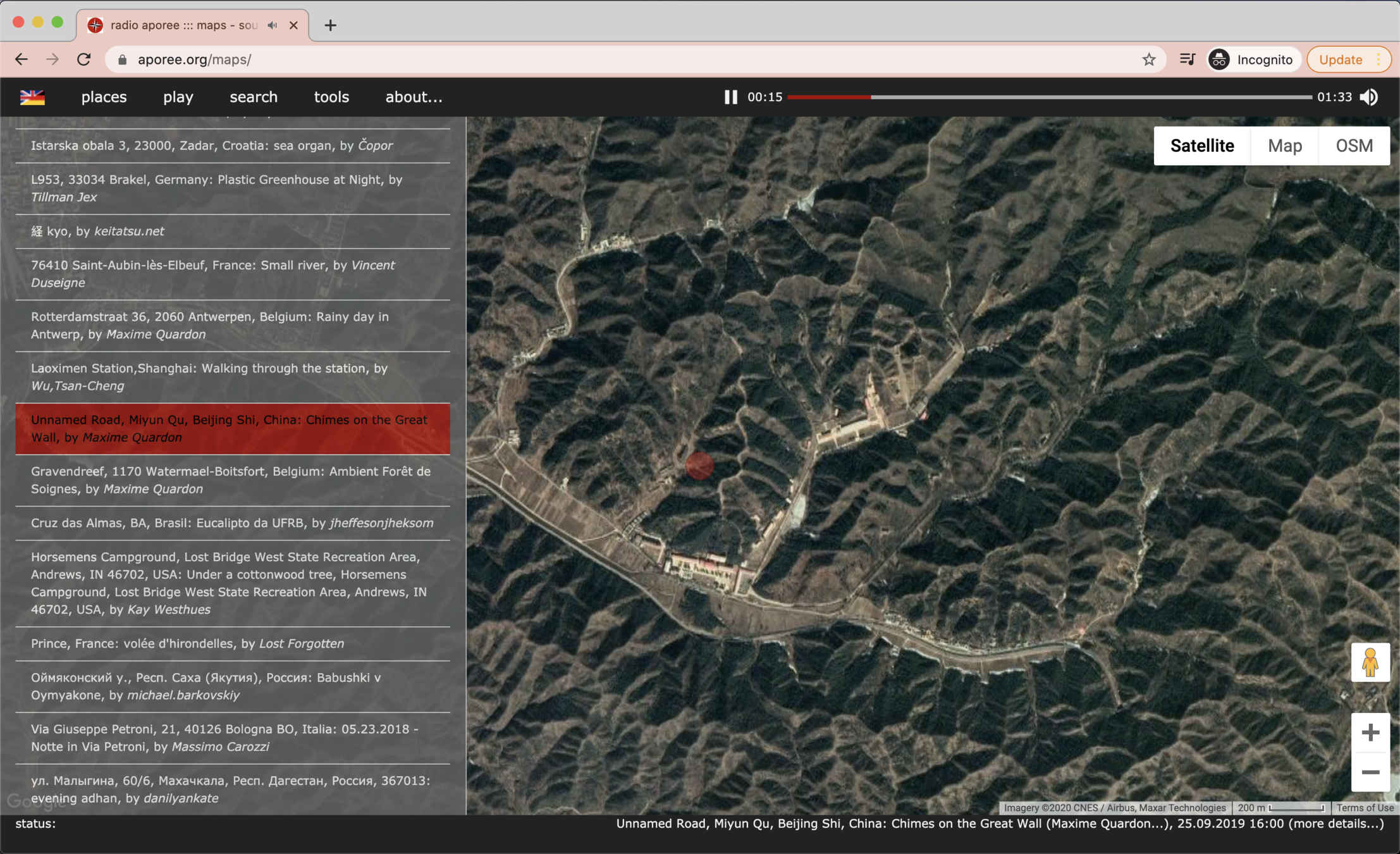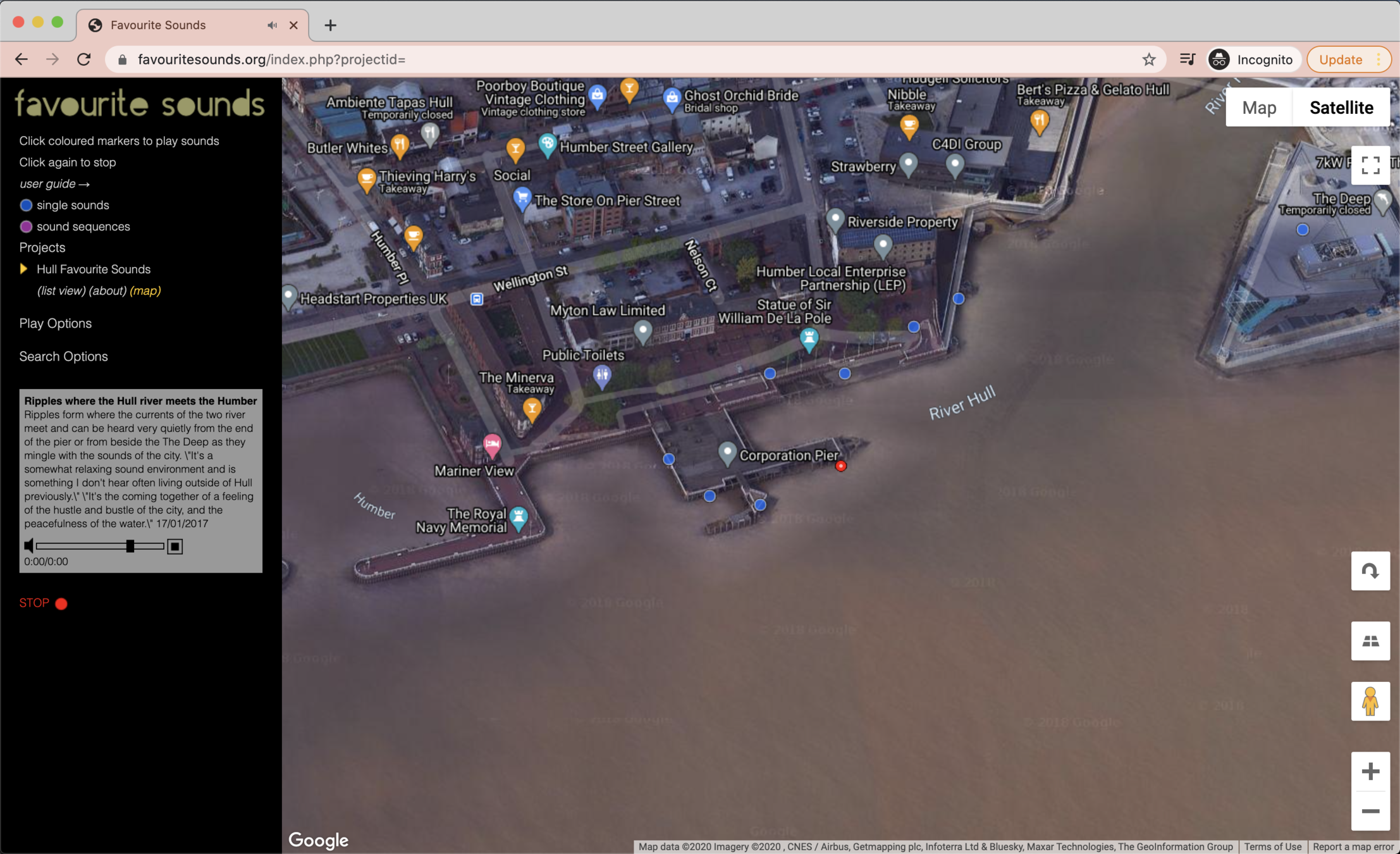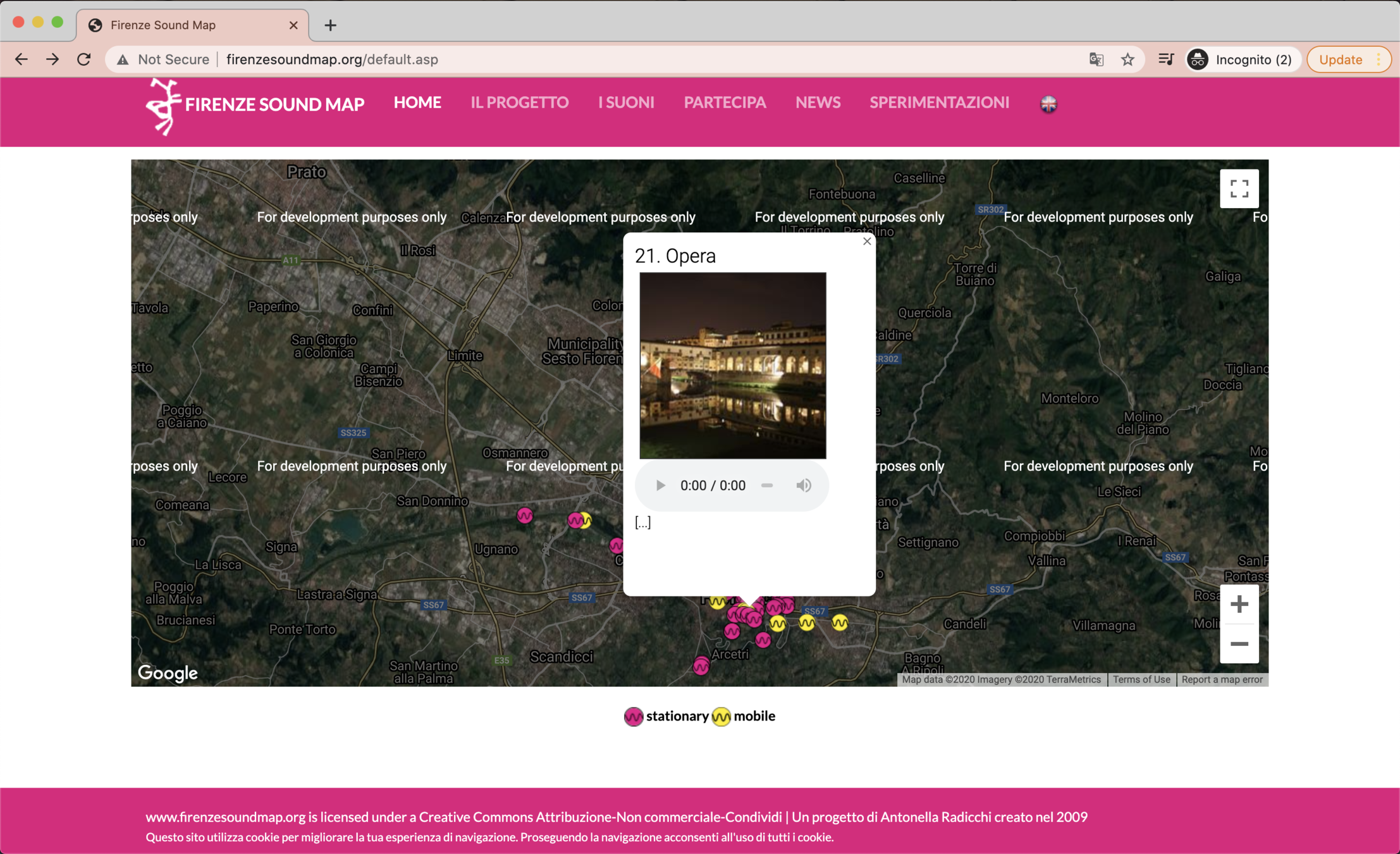Exploring Sound maps using OpenStreetMap data and FOSS through MANILAud: Metro Manila Soundscapes
MANILAud: Mapping Soundscapes Through Participatory Data Collection
Soundscapes & sound maps
Maps

with
sound?
Sound Maps
associates landmarks and soundscapes
Soundscape
Sound, when understood as an environment

Cities and Memory. (2014). Cities and Memory: Utopia. https://citiesandmemory.com/utopia/


static and two-dimensional rendering of reality
capable of describing, through sound, the inseparability of space and time and the social and emotional aspects within these dimensions linked to the experiences of everyday life
Traditional
Sound Map
An interactive map that aims to help understand how people interpret sounds around them and the noise in their local area through soundscapes; to also help shape local noise policies and plans.
Aside from this, it also wants to enable users to explore different areas in Metro Manila and somehow get the feeling of being there in that particular place despite the lockdowns and isolation caused by the COVID-19 pandemic, through the semantic descriptions of the uploader, the soundscape attached to the location, and a photo related to the location.
Users can send sound recordings related to a location; or a soundscape of that particular place.
-
Sound recording
-
Photo of the location
-
User feedback on perceived level of valence
The focus of the map is in Metro Manila, so possible soundscapes could be sound recordings from areas such as the MRT/LRT, near bridges and landmarks, parks, etc.










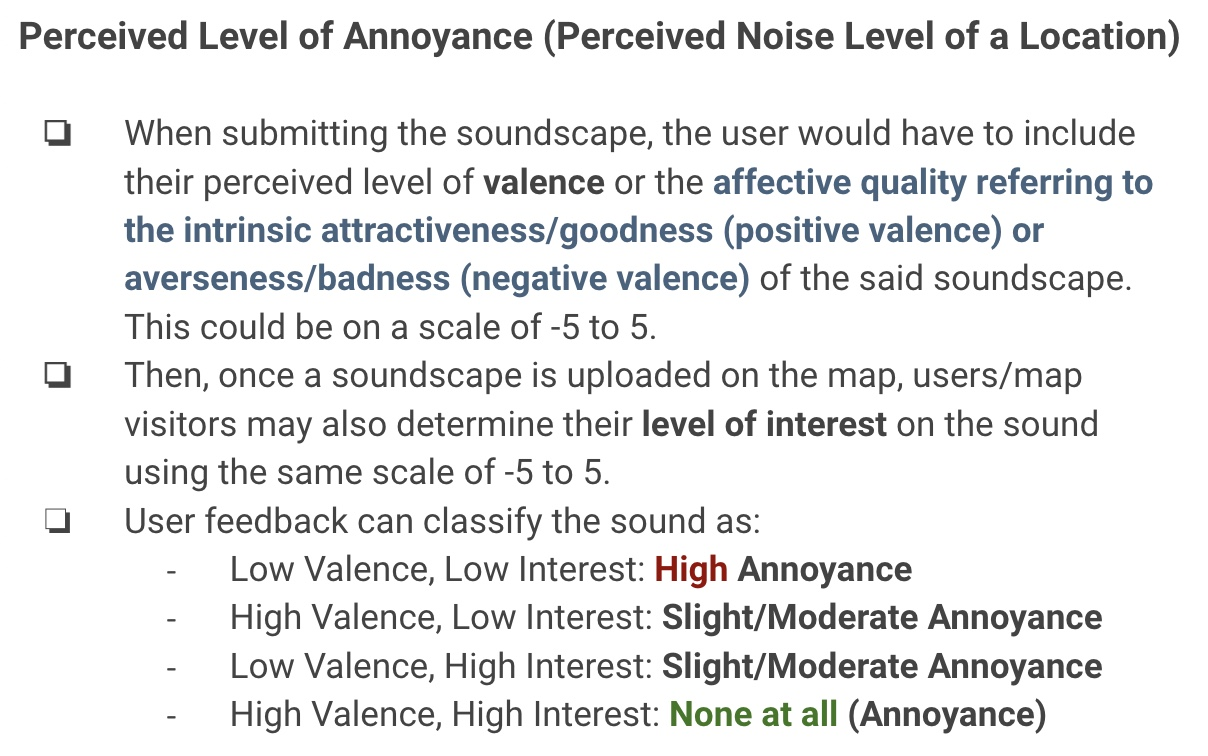





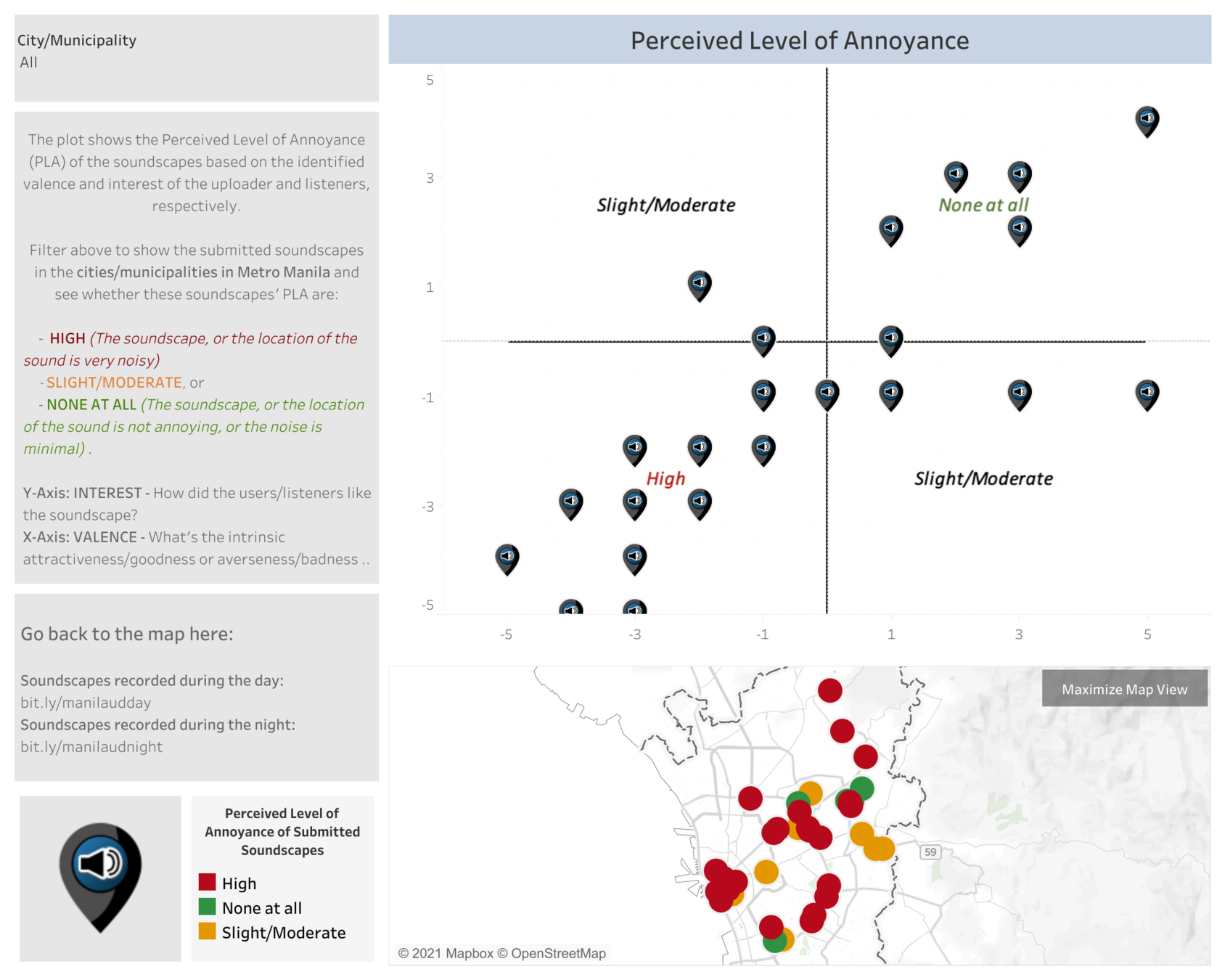

Libraries Used:
Other free tools used:
- Github Pages
- Tableau Public
The Web Map
-
The basemap used here is from Mapbox which utilizes data from OpenStreetMap.
-
This is to ensure that when soundscapes are mapped, their corresponding location submitted by the users are correct.
-
The Search tool used also uses Nominatim to search OSM data on the map.
-
Utilizing OSM data was done to help users easily locate places on the map.
Map Tools (Leaflet)
From the initial map interface, we have added map tools to help users in contributing to the map:
- Zoom controls
- LocationShare
- ControlLocate
- Geosearch
- toggleSidebar




The Crowdsourcing Mechanism
-
GoogleForm
- Recording format should be in mp3. Length should be between 20-40 seconds
- Photo should be in jpg format with (600 x 400px) dimensions











https://gme210soundmap.github.io/Manilaud/
Wild Ambience Nature Sounds. (2013). Nature Sound Map. https://www.naturesoundmap.com/
Glasgow 3d Sound Map. (2012). Think About Sound | Map. http://www.glasgow3dsoundmap.co.uk/soundmap.html
Aporee Org. (2006). Project Radio Aporee. https://aporee.org/maps/
- Cities and Memory. (2014). Cities and Memory: Utopia. https://citiesandmemory.com/utopia/
- Wild Ambience Nature Sounds. (2013). Nature Sound Map. https://www.naturesoundmap.com/
- Glasgow 3d Sound Map. (2012). Think About Sound | Map. http://www.glasgow3dsoundmap.co.uk/soundmap.html
- Aporee Org. (2006). Project Radio Aporee. https://aporee.org/maps/
- Cusack, P. (June 2012). Favourite Sounds. https://www.favouritesounds.org/index.php?projectid
- Radicchi, A. (2009). Firenze Sound Map. http://www.firenzesoundmap.org/default.asp
- Wolf, D., Komesker, J., Ruppert, M., Schneider, P. (2019). Sounds of Taipei. https://donatuswolf.github.io/Sounds-of-Taipei/?time=night
- Flesch, S., Gutsche, A, Paschen, D. (February 2017). Exploring the Untapped Potential of Sound Maps. Potsdam, Germany. Retrieved from http://www.opensourcesoundscapes.org/wp-content/uploads/2017/10/ExploringtheUn tappedPotentialofSoundMaps_FleschGutschePaschen.pdf
- Lin, W. (2015). The hearing, the mapping, and the Web: Investigating emerging online sound mapping practices. Landscape and Urban Planning, 142, 187-197. DOI: https://https://doi.org/10.1016/j.landurbplan.2015.08.007. Accessed: December 2, 2020
